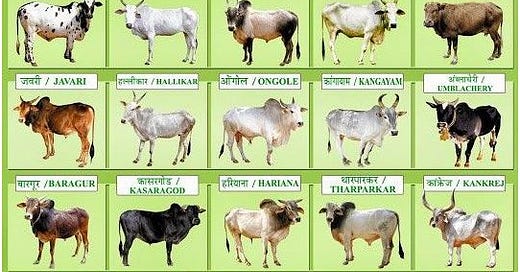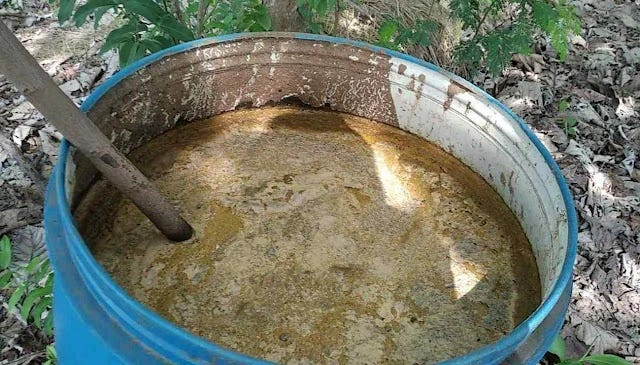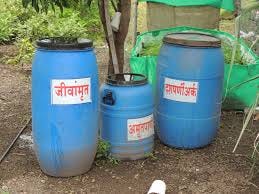Local Cow: Beyond Religious Faith?
Jersey and Holstein cows are more like human-engineered products-bred primarily for maximizing milk production through intensive practices that often involve exploitation, all in pursuit of profit.
If somebody had told me about the importance of local cow few years back, I would have laughed it off and ignored it. I still do not believe if there is some SUPERNATURAL power behind any of the activities related to cow. Some bogus like, cow dung being extremely useful for skin or cow urine being good for gut health is widely spread in country like Nepal. India has mastered it. Various Hinduvta groups in India are using cow symbol for their religious propaganda. Taking against cow in India has become extremely difficult. And Nepal is not far behind. People have become too concerned every time when there is discussion related to cow. But once let’s leave all those religious bogus and understand truly why to talk more about them. Beyond symbolic value, there are critical ecological, agricultural, and economic aspects that make discussing cows essential—especially when it comes to sustainable farming and soil health.
But what exactly is a cow?
The word “cow” used here, refers to those breeds, having prominent hump and well-developed dewlap. They have a prominent hump for fat storage, a well-developed dewlap for thermoregulation, and long tails with tufts of hair to control pests. Their drooping ears enhance sensitivity to environmental changes, while their loose, thin skin aids in temperature regulation. Local cows can have various colorations, including brown, black, white, or mixed patterns. These features are typically found in what are commonly referred to as LOCAL COWS.
I do not consider Jersey and Holstein cows to be true cows; they are more like human-engineered products, bred primarily for maximizing milk production through intensive practices that often involve exploitation, all in the pursuit of profit. I know these words are harsh and have enough space for discussion. But these exotic cows are selectively bred just to meet the demands of industrial daily farming. They are more dependent on dependent on controlled feeding, veterinary care, and specific farming practices. This has led to debates about the exploitation of animals, the environmental impact of industrial-scale dairy farming, and the sustainability of such practices in the long run.
On the other hand, local cow are well adapted to local environmental condition without creating any artificial environmental situation, require less input and care, and can be easily raised under free range conditions. Razing local cow offer a more ethical and ecologically sound alternative. Both male and female cattle have equal role in environment, unlike those of exotic breeds, whose male cattle is forced to get killed as they have no industrial utility.
Local cow superiority
The genetic ability of local cow is what makes them special. They can survive in extreme environment conditions, with minimal intervention. They are ideally suited to low-input farming systems, which reduces environmental impact significantly. The environmental cost of raising local cow is also much more minimal than exotic breeds making them ideal for farmers. But, how?
The environmental and monetary costs of producing, importing, and distributing feed are high. Exotic breeds depend heavily on these feeds. These highly productive dairy breeds require more energy, resulting in heavy consumption of artificial feeds. This high intake leads to increased greenhouse gas emissions. In contrast, local cows require no external artificial feeds, resulting in very minimal methane emissions.
Another important aspect is Compost; quality and process of making it. The moisture and fiber content in dung of local cow makes them ideal for composting. Due to optimum moisture, they require less turning, have good aeration, and fasten the process. The carbon nitrogen ratio is also balanced due to rich fiber content in local cow manure. The fiber rich compost is ideal for improving soil health and soil water retention. This aspect is different in case of Holstein and Jersey cow. The fiber content in exotic cow is much less as a significant portion of fiber is digested or processed before excretion, resulting in low quality compost. On the other hand, due to high moisture content in manure, it requires much more turning, and leads to foul odors. Regular turning become inevitable as much heat is generated, due to its nutrient density. As a result, composting exotic cow manure incurs higher production costs compared to producing a similar volume of compost from local cow manure.
Natural Farming relation to Local Cow
Unlike modern “scientific farming”, natural farming emphasize on using male calves, bull along with the female, heifer, ones. Bull contribute to this system by providing draft power as they mature, supporting farm operations such as plowing and transport, particularly in areas with limited mechanization. Local bulls are essential for breeding programs aimed at improving the genetic quality of indigenous cows and promoting sustainable livestock practices. They are often used for natural and selective mating, where bulls with desirable traits like disease resistance, good body conformation, and adaptability are chosen to enhance the genetic pool. This process ensures the transfer of superior traits to the offspring, improving milk yield, fertility, and overall resilience. Local bulls thrive in regional climates and require minimal maintenance, making them cost-effective for farmers. Their use helps retain valuable indigenous traits, such as hardiness and tolerance to diseases, which are often lost in crossbreeding.
Similarly, Cow urine, especially from local breeds, is used in preparing Dashparni Ark and other bio-pesticides. These act as natural repellents against pests and diseases, reducing reliance on chemical inputs. Their manure is rich in microbes and organic matter, helping improve soil structure and nutrient cycling that are the foundation for natural fertilizers like Jeevamrit, a liquid microbial culture that enhances soil fertility.
And mainly, the maintenance cost of local cows is typically lower than that of exotic breeds. Their ability to thrive on agricultural residues and native grasses aligns well with the low-input nature of natural farming.
In conclusion, local cows offer significant ecological, agricultural, and economic benefits that make them essential for sustainable farming. Their genetic adaptability, low maintenance needs, and ability to thrive on natural grazing make them ideal for natural farming systems. Local cows produce valuable manure and urine for composting and bio-pesticide production, reducing the need for chemicals. Male cattle also play vital roles in draft power and breeding, ensuring the continuity of resilient breeds. Used for selective breeding, local bulls contribute to improving genetic traits such as disease resistance, fertility, and overall hardiness. By integrating local cows into farming, we conserve indigenous traits, enhance soil health, and promote sustainability, making them key contributors to a more eco-friendly and economically stable agricultural future.






